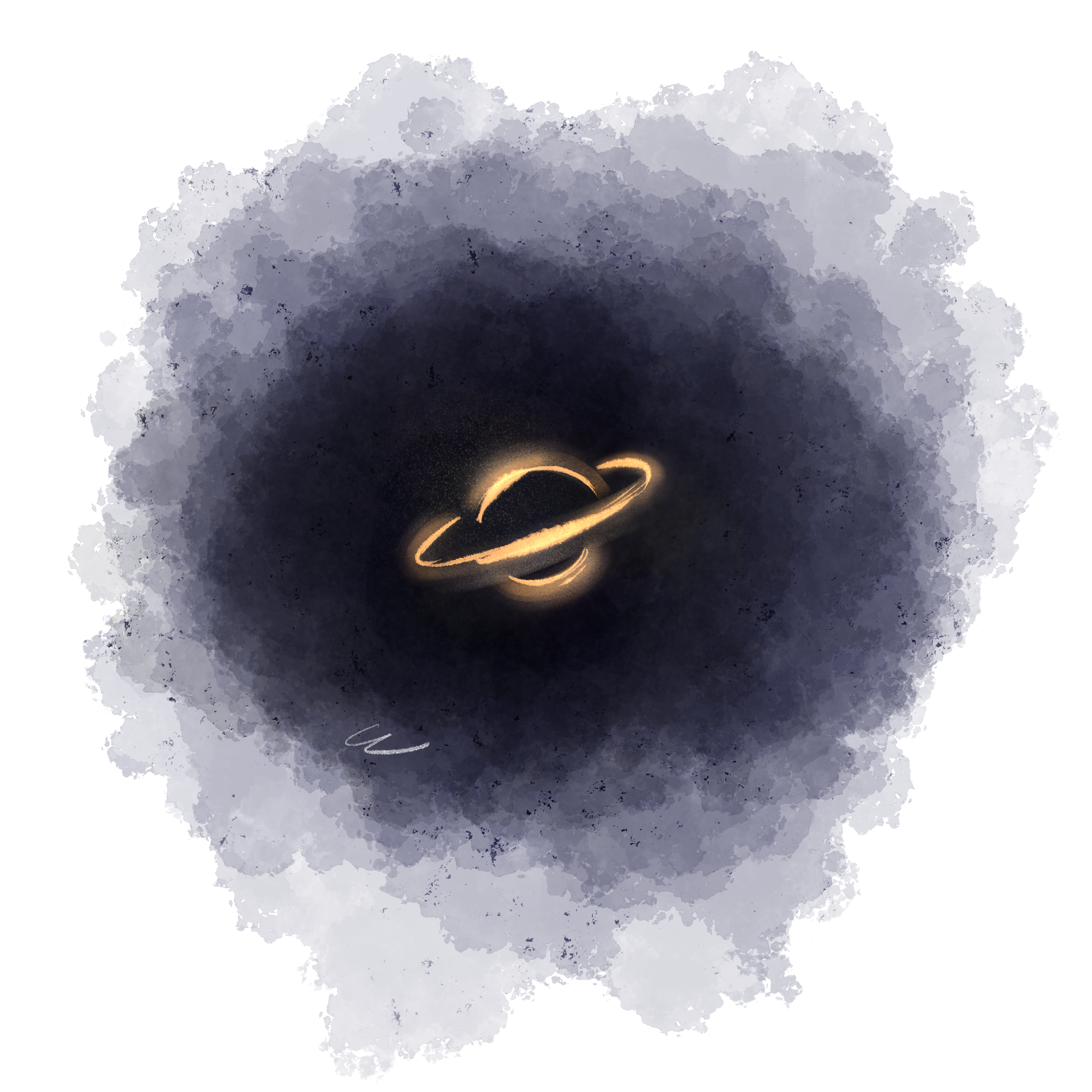Yale researchers unravel cosmic mysteries by discovering primordial black holes
Researchers discovered early black holes which could explain the gaps in myriad current theories about the formation of the universe.

Cecilia Lee, Illustrations Editor
Yale astrophysicists, in collaboration with researchers from the University of Miami and the European Space Agency, are currently using the James Webb Space Telescope to research the potential key to understanding the origins of dark matter.
The study advances a theory proposed by physicists Stephen Hawking and Bernard Carr in the 1970s, which suggests that after the Big Bang, fluctuations throughout the universe would cause certain areas to carry a higher mass and collapse into primordial black holes, which are remnants of the Big Bang. Yale professor of astronomy and physics Priyamvada Natarajan, University of Miami assistant professor of physics Nico Cappellutti and European Space Agency Director of Science Günther Hasinger led the study and the research on how primordial black holes could potentially account for all dark matter in the universe today.
“With the beginning of the operations of the [James Webb Space Telescope] in the coming months, we will start to peek into the cosmic darkness of the very early Universe,” Fabio Pacucci, a former postdoctoral researcher at the Yale Center for Astronomy and Astrophysics, wrote in a email. “Then, we might find clues that primordial black holes exist and, maybe, play a very remarkable role in our Universe.”
According to Natarajan, dark matter is thought to account for the majority of matter throughout the universe, but very little about it is known. Black holes, however, have provided a slew of discoveries in the last century. These points in space, often found in the center of galaxies, have such densely-assembled matter that not even light can escape their gravitational pull.
In previous studies, researchers had attempted to propose new hypothetical particles — such as axions or sterile neutrinos — as the source of dark matter. According to Cappelluti, Hasinger and Natarajan’s paper, “[those] efforts have all come up empty.”
Natarajan and her colleagues began to hypothesize that knowing approximately when the early universe underwent phase transitions would allow them to predict a function for the initial mass of primordial black holes. This model allowed them to discover that the majority of these black holes formed at 1.4 times the mass of the sun. The broadness of the birth mass in this model also corroborated that these primordial black holes could, in fact, account for dark matter.
“This theory is easily tested as in a universe in which all dark matter is from primordial black holes, galaxies would form earlier,” Natarajan said. “Because of this, the [James Webb Space Telescope] will detect many more galaxies.”
In addition, they speculated that these primordial black holes would cause galaxies and all other cosmic events to occur faster than previously expected on the universe’s timeline.
The James Webb Space Telescope, or JWST, was launched on Dec. 25, 2021, after decades of development and delays. Over six times larger than the Hubble Space Telescope — launched in 1990 — the JWST is designed for near-infrared astronomy in order to better detect colder and higher red-shift objects, which are typically older and farther away.
These unique features are well-suited to corroborate the findings of the study, according to Natarajan. Primordial black holes would have caused myriad stars and galaxies to form around them in the beginnings of the universe, which is the period the JWST can observe. In the next several years, when Natarajan and other researchers gather data from the JWST, they will be able to observe whether the spectra that the JWST produces confirms their theory.
“All kinds of new discovery space opens up with new technologies,” emphasized Natarajan.
Primordial black holes can not only explain the source of dark matter, but also several other cosmic mysteries. According to Natarajan, earlier models failed to explain why there was relatively little time between the formation of the first stars and the subsequent formation of quasars — extremely bright regions at the centers of galaxies. The presence of primordial black holes suggests that every cosmic event is shifted earlier onto the universe’s timeline.
Moreover, radiation from outer space comes in the form of a diffuse fog in both infrared and X-ray radiation. While models of star formation suggest that not all of this fog can be composed of stellar radiation, it was difficult to conclusively point to another source. Primordial black holes, however, can explain this issue as well; black holes emit very similar radiation to stars, and can thus account for much of this diffuse fog of radiation.
The James Webb Space Telescope is the most sensitive telescope made to date, observing wavelengths from 0.6 to 28.3 microns, according to NASA.







